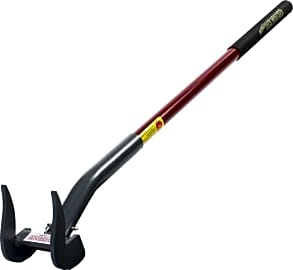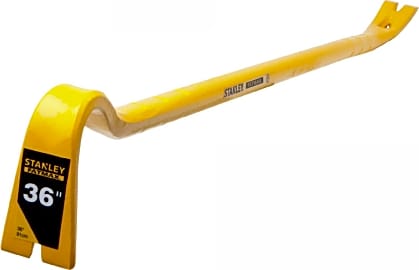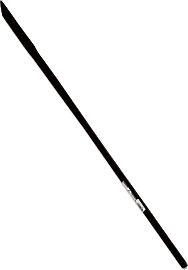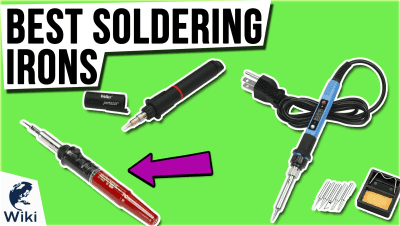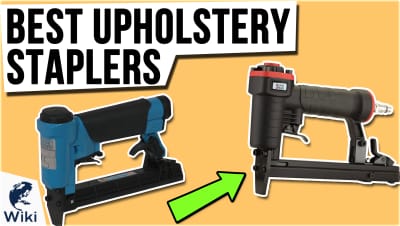The 10 Best Pry Bars

This wiki has been updated 42 times since it was first published in October of 2015. Ideal for opening wooden crates, removing nails from lumber, pulling up old deck boards, and demolishing drywall, these pry bars (also known as crow bars) are a go-to tool for both construction professionals and home do-it-yourself enthusiasts. If you just need something for tasks around the home or if you're looking to outfit a construction crew, one of these will get the job done. When users buy our independently chosen editorial picks, we may earn commissions to help fund the Wiki.
Editor's Notes
April 22, 2021:
With a lever long enough, you can move the world, and with the right prybar, you can move, separate, and split a huge range of items and materials. Of course, most people are familiar with the style shared by the Schrade Black and DeWalt Spring Flat, which are great for general use. If you need something more heavy-duty, though, there are plenty of options. While several of our selections do have somewhat specialized use cases, the Duckbill Deck Wrecker, Stanley FatMax Xtreme FuBar III, and ApexTool GearWrench are particularly notable for their innovative geometry, long form factor suitable for industrial use, and variety of convenient and leverage-enhancing features.
With all that said, we're highly confident that these remain the 10 best choices for most people, so we haven't made any changes to the Wiki this time around.
March 02, 2020:
For this update we only removed one entry, the Ames Companies Temper, replacing it with the True Temper Pinch Point. This tool is still a nice long 66 inches and has the same easy-to-grip 1.5-inch handle as its predecessor, but at a significantly lower price.
This type of pry bar might not be as familiar to you as the other crowbar-style versions, but it's very useful if you know how to handle it. Its extended length allows you to generate a huge amount of leverage, like when you're pulling up an old tree stump, or raising heavy machinery. Their shape makes them ideal for demolition jobs too, like breaking up concrete, clay, or other hard surfaces.
A Primer On Pry Bars
Whether you’re a do-it-yourselfer, homeowner, pro builder, or junk salvager, a pry bar is a must-have tool to keep on hand.
Whether you’re a do-it-yourselfer, homeowner, pro builder, or junk salvager, a pry bar is a must-have tool to keep on hand. These implements can help you with all kinds of jobs, including removing baseboards, performing demolition tasks, breaking into crates, removing nails, and much more. Luckily, there are various pry bars that are suited to each category of task. We’ve outlined just a few here for your convenience.
First are lightweight or mini pry bars for emergency or casual use. These are a go-to if you need to unstick something only occasionally or if you’d like a portable version for your vehicle or perhaps a go bag. Although small, these make a great companion for those times when you could perhaps use your fingers but would prefer not to, like if you have a pebble caught in your shoe or you need to scrape some gunk off a hard surface.
Then there are the classic pry bars, what most people would picture when asked to think of one. Typical class 1 levers, they help you open, remove, and pry with ease, and can be used for breaking items apart in a pinch, although most aren’t heavy enough for true demo work. Many typical versions feature a nail slot in one end, making them great for home renovations.
Next come the adjustable type. If you have a wide range of general tasks that you need to perform with a pry bar, one of these might be your best bet. Each has an articulating head that can be positioned in a range of angles, so it will fit better in all kinds of spaces. The added flexibility is often helpful in ensuring that whatever you’re prying doesn’t break, as you can make adjustments as needed.
Finally, there are specialty pry bars, the ones that were created with specific applications in mind. A good example are those made for breaking down pallets or those that aid in painting (these generally feature a flat scraping head). Usually selected by construction professionals or home renovators who have very specific needs, specialty pry bars can be purchased on an as-needed basis to supplement your everyday-use version.
Tips For Successful Pry Bar Use
Just looking at a pry bar, it seems pretty innocuous; after all, these tools don’t have blades or moving parts, and unless you swing it at someone, it shouldn’t be moving terribly fast. Used incorrectly, however, a pry bar does have the potential to cause injury. To prevent this, a few best practices are in order.
Make sure that you’ve inserted the end firmly between the objects you’re prying, as well, so you don’t waste your effort.
To begin with, it’s a good idea to work in a clear space away from others. Should any debris be launched into the air, you don’t want it to hit anyone. You can also prevent projectiles by ensuring that everything you’re working with is secure. In other words, don’t rest an object on an unsteady ledge and try to apply force to it, as you’ll be asking for trouble. Always wear the appropriate protective gear, including safety goggles, gloves, and work boots.
Additionally, you should not attempt to use a broken pry bar. Thrift comes naturally to some people, but damaged tools can cause injury. If the tip of your pry bar is compromised, for example, it could fly off and hit someone. Or, if the bar is bent in the middle, it could snap and cause you to fall as you’re applying force. Inspect your tools regularly and replace those that are not in good working order.
You should also choose the right pry bar for the job. Perhaps you’re using the bar and it starts to bend in the middle; that would be an indication that it’s not strong enough for the application. Make sure that you’ve inserted the end firmly between the objects you’re prying, as well, so you don’t waste your effort.
And lastly, do not work such that the object you are prying is facing toward your body. For instance, if you want to remove the top from a crate, do not insert the pry bar in such a way that you’ll be pulling down, because when the top comes off, it has the potential to hit you. Instead, insert the bar and push away from you so that the item is moving away from you, too. While pressing, try to use smooth motions and don’t rush or jerk the bar.
A Brief History Of The Pry Bar
Unlike, say, the angle grinder, the pry bar is not a recent invention. In fact, most sources agree that it was first mentioned in the 1300s, but it’s possible that it could be even older than that. Although we don’t have pictures of these superannuated versions of the tool, they were mentioned in poetry and even in William Shakespeare’s classic “Romeo and Juliet”.
In fact, most sources agree that it was first mentioned in the 1300s, but it’s possible that it could be even older than that.
It is these mentions that have helped put to rest some of the controversy that surrounds the pry bar’s name. In many areas, the pry bar is more often referred to as a crowbar, which is only one name among many: wrecking bar, pig foot, jimmy or jemmy, prisebar, and pinch-bar are some of the others. According to a rumor, however, the name “crowbar” was intended to be racist, denoting its use in menial labor and referencing Jim Crow, an abhorrent system of legitimized racism existing in the late 19th and early 20th centuries.
The only problem is that mention of crowbars go as far back as the 14th century, which was long before Jim Crow laws were conceived. The reason for the appellation “crow” was quite simple: the end resembled the beak or perhaps even foot of the namesake bird. They were also referred to as “iron crows”, an example of which can be found in “Robinson Crusoe”, published by Daniel Defoe in 1719. Of course, anyone who does not like the term crowbar can certainly choose any of the other names for this useful item.



